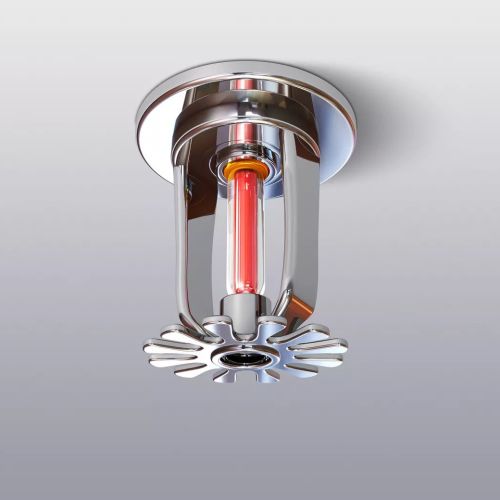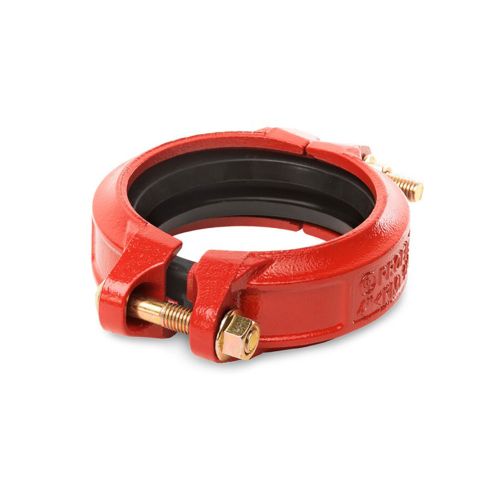What is the foam fire extinguishing system and what are its advantages and disadvantages ?
What is the foam fire extinguishing system and what are its advantages and disadvantages?
What you read in this article:
What is an automatic foam fire extinguishing system?
What is fire extinguishing foam?
Types of fire extinguishing foams in the fire extinguishing system
Performance of foam fire extinguishing system
Advantages of foam fire extinguishing system
Disadvantages of foam fire extinguishing system
Fire extinguishing system foam production methods
The main parts of the foam automatic fire extinguishing system
Foam spreading equipment
Application of foam fire extinguishing system
What is an automatic foam fire extinguishing system?
Automatic foam fire suppression system (Foam Fire Suppression System); In fact, it is a type of water sprinkler fire extinguishing system, which is used to extinguish flammable liquids such as gasoline, oil, thinner, etc., on a large scale. Foam has a lower density than water, which is why it creates adhesion on surfaces and prevents fire from spreading.
The fire extinguishing foam system (floor) is a mixture of foam and water, and it is discharged into the fire area through nozzles embedded in the environment. The role of foam in a fire is to cover the surface of combustible materials and prevent the contact of oxygen with the materials, as well as reduce the temperature and suppress the fire.
The equipment used in the foam fire extinguishing system is somewhat similar to the equipment of the water fire extinguishing system, and the only difference is that in addition to water tanks, the inside of these systems is composed of nozzles, automatic valves and other necessary materials.
The way it works is that the foam fire extinguishing system automatically combines water and foaming agent together and then the fire extinguishing foam is pulled out from the sprinkler.
What is fire extinguishing foam?
Fire extinguishing foam (foam or fire fighting foam) was invented by a Russian chemist and engineer named Alexander Laurent in 1902, and it is used where water does not have the ability to extinguish a fire.
The main ingredient of firefighting foam is surfactant (the same active chemical substance that creates foam in shampoos) with less than 1% foam production power, and organic solvents (such as trimethyl, trimethylene glycol, and hexylene glycol), stabilizers. It is foam (such as dodecanol) and corrosion inhibitors.
In other words, foam is formed from water, foam concentrate (any substance that has rich and dense compounds of one or more substances is called concentrate) and air. A significant point that becomes important in choosing the type of foam and its use is its expansion power, which depends on the amount of water in the foam. For more information on the foam fire extinguishing system, contact Horsan Ayman Bahnia experts. (link)
Types of fire extinguishing foams in the fire extinguishing system
Fire fighting floors are divided into two categories based on the materials used:
Chemical based foams
Chemical foams or synthetic (artificial) foams, when forming foam, have less stability, faster expansion and higher coverage.
Classification of chemical foams
AFFF
AR-AFFF
High expansion
Protein based foams
Protein foams made of natural materials and protein have more stability and lower development speed during foam formation.
These types of foams are produced from three types of proteins:
Vegetable protein
Like some plants and mushrooms that have high protein. This type of raw material does not have many fans in Iran.
Animal protein
Animal protein foam is prepared from protein parts, such as bones, hoofs, horns, etc., of animals such as cows and sheep. These wastes are found in abundance in Iran, and factories producing protein foams usually use these materials.
Synthetic protein
Due to the limitation of protein sources, these materials are used in some countries.
Performance of foam fire extinguishing system
as it mentioned; The design of the foam fire extinguishing system is similar to the water sprinkler fire extinguishing system. In this way, after the fire is detected by the control valve connected to the water inlets, water flows in the network of pipes and foam material is poured into it at the same time. Then the expansion occurs and a large amount of the floor is discharged into the fire environment.
Advantages of foam fire extinguishing system
The foam fire extinguishing system is completely efficient and useful if it is used correctly according to the conditions and laws.
In the following, we mention some of the advantages of using these systems. For more information about choosing the right fire extinguishing system, you can contact Horsan Ayman Bahnia expert team, and get guidance on choosing and buying the right system. (link)
This extinguishing system leaves the least pollution in the environment with minimal negative impact and can be easily decomposed in natural environments and wastewater treatment facilities. (Protein foams are easily decomposed in nature).
Automatic foam fire extinguishing system is very useful in large spaces. With fast coverage and high discharge speed, it suppresses the fire in a short period of time and performs well in large places. If you need an extinguishing agent with a high discharge rate and fast coverage, the foam extinguishing system is the right choice.
The foam extinguishing system has affordable installation and maintenance costs and is very efficient in chain fires such as fuel warehouses where the smallest fire ignites other parts and starts a big fire.
Disadvantages of foam fire extinguishing system
Although the foam automatic fire extinguishing system plays a useful and effective role in controlling and suppressing fire, its installation also faces challenges:
The foam automatic fire extinguishing system needs a lot of water resources. Therefore, there should be a large water source

Author :
-
This email address is being protected from spambots. You need JavaScript enabled to view it.


